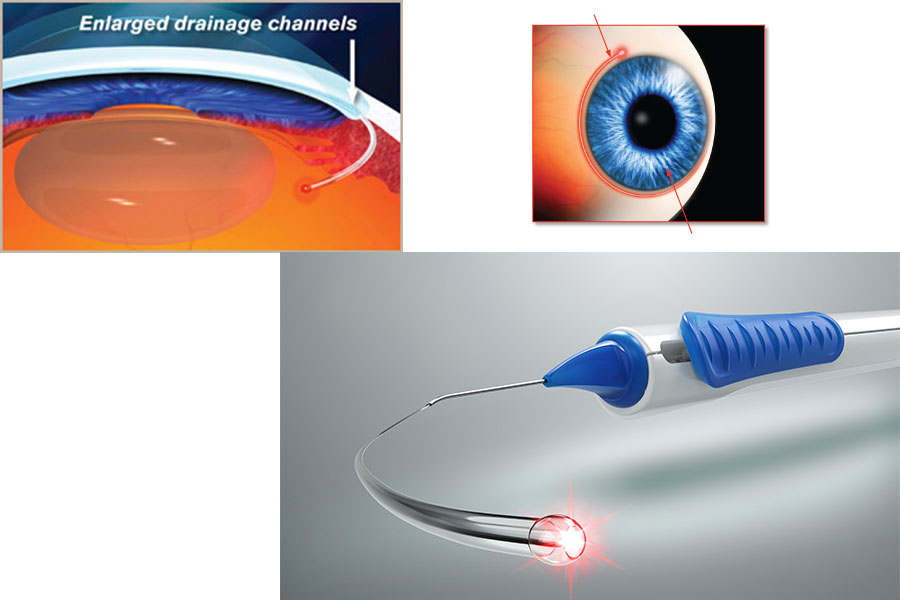Canaloplasty Surgery in the Philippines: Comprehensive Guide
Canaloplasty is a specialized, non-penetrating glaucoma surgery designed to restore the eye’s natural drainage system, thereby reducing intraocular pressure (IOP). Unlike traditional glaucoma surgeries that create a new drainage pathway, canaloplasty works by enhancing the function of the existing canal, making it a safer and less invasive option for many patients.
In this comprehensive guide, we’ll cover:
-
What canaloplasty is and how it works
-
Whether it’s available in the Philippines
-
Cost expectations
-
Benefits and risks
-
Alternatives if it’s not offered near you
-
FAQs for patients considering canaloplasty
What is Canaloplasty Surgery?
Canaloplasty is a non-penetrating glaucoma surgery primarily used to manage open-angle glaucoma. The procedure involves enlarging the Schlemm’s canal, which is the natural drainage channel in the eye, using a microcatheter and viscoelastic solution. By restoring normal fluid outflow, canaloplasty effectively lowers eye pressure without creating a permanent filtering bleb (which is common in trabeculectomy).
How Does Canaloplasty Work?
-
Microcatheter Insertion: A tiny catheter is threaded through the Schlemm’s canal.
-
Viscodilation: A viscoelastic substance is injected to expand the canal.
-
Tension Suture Placement: A suture is tied around the canal to keep it open, improving fluid drainage.
This minimally invasive approach significantly reduces the risk of complications associated with traditional surgeries.
Is Canaloplasty Available in the Philippines?
Currently, canaloplasty surgery in the Philippines is limited and not widely available compared to conventional glaucoma procedures like trabeculectomy and laser-based therapies. The primary reasons include:
-
Specialized Equipment Requirements: Canaloplasty requires advanced tools like the iTrack™ microcatheter.
-
Surgeon Expertise: Few ophthalmologists in the country are trained for this specific technique.
-
Cost Considerations: Because of specialized devices, canaloplasty can be more expensive than standard treatments.
However, some leading eye centers and hospitals in Metro Manila and major cities may offer it, especially those that specialize in advanced glaucoma care. If your ophthalmologist recommends canaloplasty, confirm its availability with the hospital or surgical center.
Benefits of Canaloplasty Surgery
Why do some patients prefer canaloplasty over traditional glaucoma surgery? Here are the major benefits:
-
Lower Risk of Complications: No permanent opening in the eye wall means reduced infection risk.
-
No Filtering Bleb: Eliminates issues related to bleb maintenance.
-
Minimally Invasive: Less trauma to the eye compared to trabeculectomy.
-
Long-Term Pressure Reduction: Helps maintain stable eye pressure without heavy dependence on medications.
-
Better Quality of Life: Faster recovery and fewer post-op restrictions.
Risks and Considerations
Although safer than traditional methods, canaloplasty still has some risks:
-
Temporary Eye Discomfort: Mild pain or redness post-surgery.
-
Incomplete Pressure Reduction: Some patients may still need medications.
-
Not Suitable for All Glaucoma Types: Mainly used for open-angle glaucoma; not ideal for angle-closure cases.
Cost of Canaloplasty Surgery in the Philippines
The cost of canaloplasty in the Philippines varies greatly depending on the hospital, surgeon, and availability of equipment. In general:
-
Estimated Cost: ₱80,000 to ₱150,000 or more (if available locally).
-
Factors Affecting Cost:
-
Hospital facilities and technology
-
Surgeon’s expertise
-
Type of anesthesia and post-op care
-
Important: Canaloplasty is not always covered by basic health insurance in the Philippines, so confirm coverage with your provider.
Read about Philippines laser glaucoma treatment expenses
https://glaucoma.ph/glaucoma-treatment-cost-philippines-2025/
Alternatives to Canaloplasty in the Philippines
If canaloplasty is not available, your ophthalmologist may recommend:
-
Trabeculectomy: The most common glaucoma surgery in the Philippines.
-
Laser Therapies: Selective Laser Trabeculoplasty (SLT) or Argon Laser Trabeculoplasty (ALT) are widely available and cost-effective.
-
Minimally Invasive Glaucoma Surgery (MIGS): Includes procedures like iStent or Xen Gel Stent, offered in select centers.
Canaloplasty vs. Other Glaucoma Surgeries
| Procedure | Invasiveness | Recovery Time | Bleb Formation | Cost Estimate |
|---|---|---|---|---|
| Canaloplasty | Minimal | Fast | None | High (₱80k–₱150k+) |
| Trabeculectomy | High | Longer | Yes | ₱50k–₱90k |
| MIGS | Minimal | Fast | None | ₱70k–₱130k |
| Laser SLT | Non-invasive | Very Fast | None | ₱8k–₱20k |
Post-Surgery Recovery & Care
Recovery from canaloplasty is generally faster than traditional surgeries. Patients can usually resume light activities in a few days, but full recovery may take several weeks. Follow your doctor’s advice on medications, eye drops, and follow-up visits to ensure the best results.
Frequently Asked Questions (FAQs)
1. Who is a good candidate for canaloplasty?
Patients with open-angle glaucoma who have not responded well to medications or laser treatments are ideal candidates.
2. How long does the surgery take?
On average, canaloplasty takes 45 to 60 minutes per eye.
3. Is it painful?
No, the procedure is performed under local anesthesia. Some mild discomfort may occur post-op.
4. Will I still need glaucoma medications after canaloplasty?
Some patients still require medications, but usually at a lower dosage.
5. How soon can I return to work?
Most patients resume work within a week, depending on the nature of their job.
Consult a Glaucoma Specialist
If you’re considering canaloplasty in the Philippines, consult a qualified glaucoma specialist to determine if the procedure is right for you. Availability may be limited, so your doctor can recommend alternative options or refer you to an advanced eye care facility.
✅ Final Thoughts
Canaloplasty offers a promising solution for glaucoma patients seeking a safer, less invasive alternative to traditional surgery. While it is not widely available in the Philippines, checking with major hospitals and eye centers is your best bet. If not accessible locally, discuss alternatives such as MIGS or laser treatments with your ophthalmologist.




